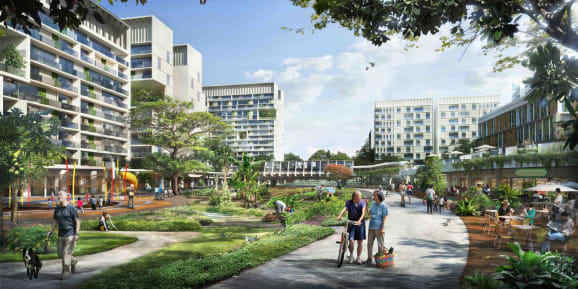Walkability is a phrase that gets lobbied around fairly often in the smart city space, but what does it mean?
Simply put, walkability refers to a city’s “ability to be walked”, as it were. This means how easy it is for an individual to navigate their day’s errands without reliance on a mode of transport such as a car, bus or train.
Think about the average person’s day – where they might traverse between their place of residence, work, a shopping centre, perhaps the dentist or a school, and so on. Typically, these spaces are zoned far enough apart that it would be impossible to reach all of them without making a vehicular commute.
Singapore’s new ecotown called ‘Tengah’ is pioneering to change all that. Tengah is a city that can be walked – a self-contained community whose design favours pedestrians and cyclists over cars and trains. Footpaths, nature and water catchments dominate the routes to various destinations, creating a network of interlinking spaces utilised for everything from residential, to commercial, to public sectors.
A spectacular 100 metre-long corridor of trees, wildlife and a water catchment is set to run through the centre of this futuristic smart city with 42,000 homes. As well as adopting a back-to-nature approach to conservation, Tengah is also adopting the latest in Internet-enabled applications, automated vehicles and cutting edge technologies.
This ecotown’s sustainability in urban design focuses on:
• Green development
• Emerging smart technologies
• Cycling and pedestrian-friendly design
• Electric vehicle charging stations
• Provision for autonomous and self-driving vehicles
Tengah is set to provide truly stunning urban living, as Singapore is officially proving that forests and cities can not only co-exist, but thrive off one another.
The benefits of walkability abound for everything from the economy, to public health, to sustainability.
Image Credit: The Housing & Development Board


Recent Comments